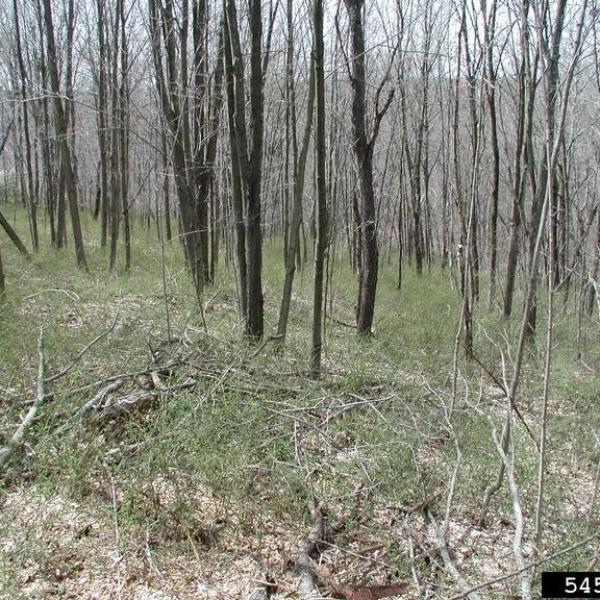
As we progress into summer heat waves and holiday vacations, many plants have flowered and started to go to seed. One invasive plant, Japanese barberry (Berberis thunbergii), at this point in the season (July/August) will have seeds forming and ripening. Japanese barberry is a member of the barberry family (Berberidaceae), which includes native species like Blue cohosh (Caulophyllum thalictroides) and mandrake (Podophylum peltatum), but there are no native members of the Berberis genus in New England. Species within the barberry family are perennial herbs or woody shrubs, all which have alternately arranged leaves. The woody shrub species in this family have spines located at nodes along the stems.
Japanese barberry originates from Japan, and has historically been a popular landscaping shrub. It can be found in forest edges, forests, meadows, fields, and disturbed areas. Japanese barberry is spread throughout the East Coast, the Atlantic Provinces, and is spreading west. It can send up sprouts from shallow-growing rhizomes, and the long bending canes of this shrub can also root if they bend enough to touch the ground.
Leaves of the Japanese barberry are small (~1”), green, spatula shaped, with smooth margins, grouped in clusters along each cane. The flowers and red oblong fruit hang below the cane, and fruit can be produced in sun or shade.
This plant is on Vermont’s Noxious Weed Quarantine, and is listed on prohibited species lists across New England. Japanese barberry can have an impact on forest soil cycling by raising soil pH and increase nitrate levels, and these changes can persist long after the barberry is removed. It can also alter the humidity of the understory by growing so densely the plants increase ground level humidity to 80%, and combined with the shade these thickets create, this makes good nursery habitat for larval ticks. This plant also has the potential to alter forest successional patterns in stands where it has invaded.
Good times to scout for Japanese barberry in the woods are the spring and fall, and right now into the fall start to look for those bright red fruits. The plants will also hold onto their leaves into the fall, turning red.
To learn more about Japanese barberry, check out these additional resources:
Michigan Department of Natural Resources
Invasive Plant Atlas of New England
Written by Elizabeth Spinney, Invasive Plant Coordinator, Vermont Department of Forests, Parks & Recreation
Photo Credit: Leslie J. Mehrhoff, University of Connecticut, Bugwood.org